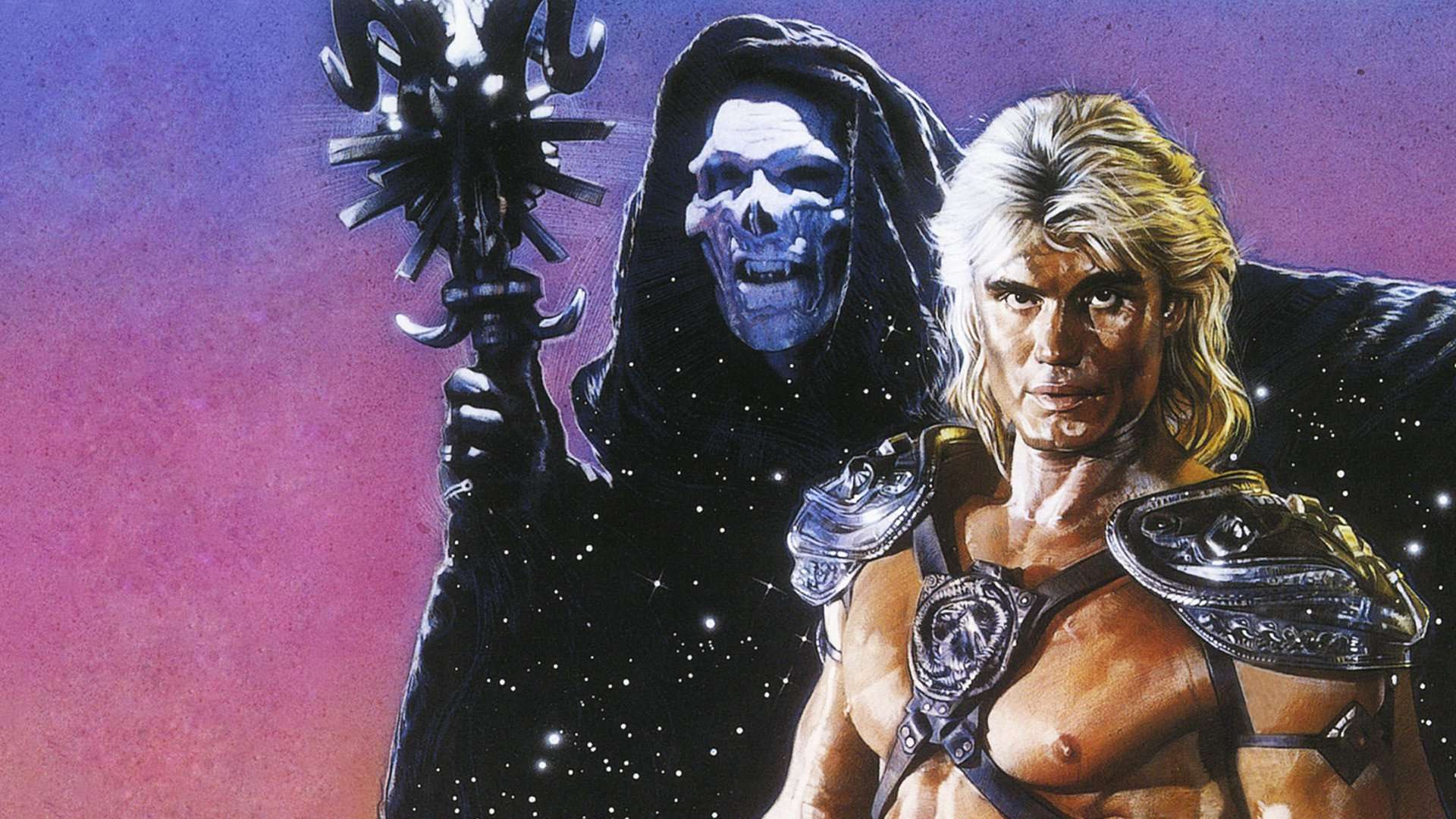
He-Man’s adaptation predicted our property-obsessed present.
Before G.I. Joe made its American toy soldiers into flesh-and-blood Channing Tatums, there was Dolph Lundgren ascending to the peaks of oiled shirtlessness as He-Man in Masters of the Universe. Thirty years ago, the art of toy-to-live-action adaptation began with a film so poorly received that it (combined with films like Superman IV) pushed its production company towards bankruptcy. By the Power of Grayskull…there just simply wasn’t the marketing or theatrical infrastructure to enforce the sort of power current toy- or comic-based films hold.
This was before the era of adaptations whose properties are too big to fail, like the woefully-reviewed yet profitable Transformers series. This was the era of Clue and The Garbage Pail Kids Movie – films adapting strange toys into stranger movies. Masters of the Universe continued this oddball adaptation strategy by bringing its action figure characters away from the planet of Eternia and to the far more mystical setting of New Jersey. Here the Mattel characters meet a cool teen played by Courteney Cox and hail an Earthling detective played by James Tolkan as an interdimensional hero. This is certainly a strange subplot, but this adaptive strategy is one of its most interesting and far-reaching aspects.
This idea, characters in a fantasy setting (fictitious in some instances, but dimensionally foreign in all cases) coming to the Earth we as audience members inhabit, was preceded by Woody Allen’s The Purple Rose of Cairo among others and followed by films as diverse as the Super Mario Bros. film, Last Action Hero, Cool World, and this year’s The Dark Tower. They all feature people jumping into and out of cartoon worlds, alien worlds, video game worlds, and cinematic worlds into our “real world.” It became a popular way to approach adaptations in the late ‘80s through the ‘90s where, in order for the filmmakers to feel comfortable with audiences interacting with a potentially unfamiliar property, the films were given surrogates so broad that the whole plots of the film moved to American cities.
Typically a physical barrier was passed through, explaining the idea of media transportation, in a way similar to the “character bursting through a page” manifestation of posters, comic covers, and trailers. These kinds of ideas are old, dating all the way back to the first newspaper comic adaptations in the 1900s, explaining the familiarity our society gained with the movies. By making the worlds of comics, toys, and video games dimensions from which characters must escape to the real world (movies), film was solidified as our dominant cultural medium. This transition, surprisingly filled with meaning, between media often has a metaphorical narrative explanation. Here, Masters of Universe opens a cosmic portal.
What was a formula-shifting entry into the adaptation canon was also a defining film for its lead, despite its financial struggles and critical failure. Lundgren made a huge impact in Rocky IV on American audiences and star Sylvester Stallone’s heart (by punching it), but his action starring debut was poorly received. What could’ve been the same kind of iconic (albeit flat) role as Arnold Schwarzenegger in Conan the Barbarian became a damning portent of Lundgren’s future. Without the intimidating violence of Conan or the deadpan humor of Arnold’s later roles, Lundgren’s physicality became a weakness. His muscularity and simple heroism – without the necessary sense of fun – pigeonholed him into the go-to for flat action scripts with boring leads. These films, however, didn’t have the financial savvy or forethought to have had a line of popular kid’s toys associated with them.
Though the film’s camp was underappreciated in its time by everyone but the six-to-ten year olds it was aimed towards (ok, maybe they didn’t get the camp), enough people remember the film fondly (and have had children of their own) that a remake has been in the works for over a decade. A troubled production is nothing new to the franchise, if you want to call it that, as Masters of the Universe couldn’t even get its score recorded without an international snafu leading to a soundtrack stitched together from various takes of various orchestras.
However, at least the initial film had just a single writer and a single director, rather than gaining and losing a dozen or so (from John Woo to McG) during development like the supposed reboot. If He-Man and Skeletor return to the big screen, the marketing campaign likely won’t compare it to Star Wars again, but rather embrace the overwhelming action tropes of recent nostalgia films like Power Rangers and G.I. Joe. Repackaging parents’ childhoods for their kids is our cynical reality, but in 1987, Masters of the Universe embraced its silly childishness completely earnestly.
Related Topics: Adaptations, Anniversary
